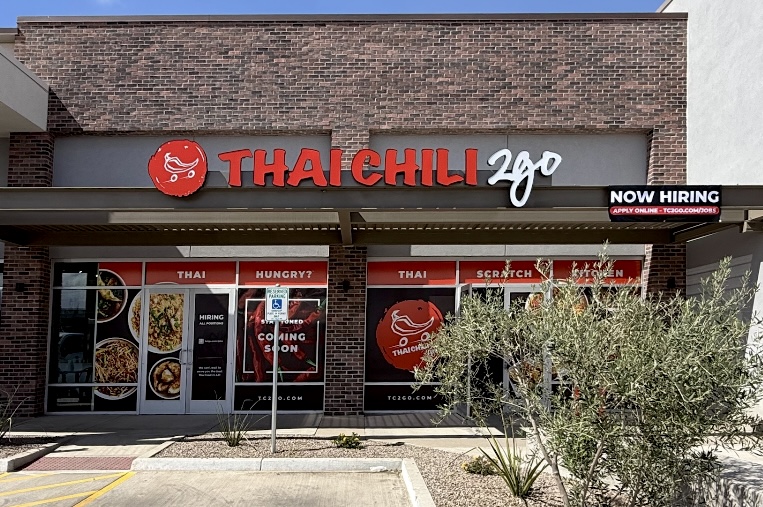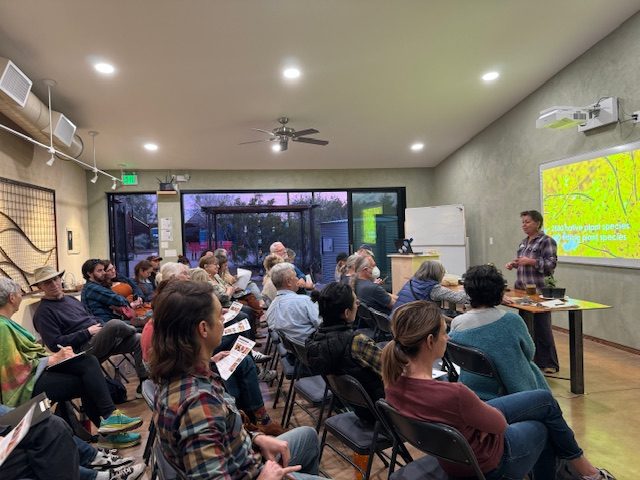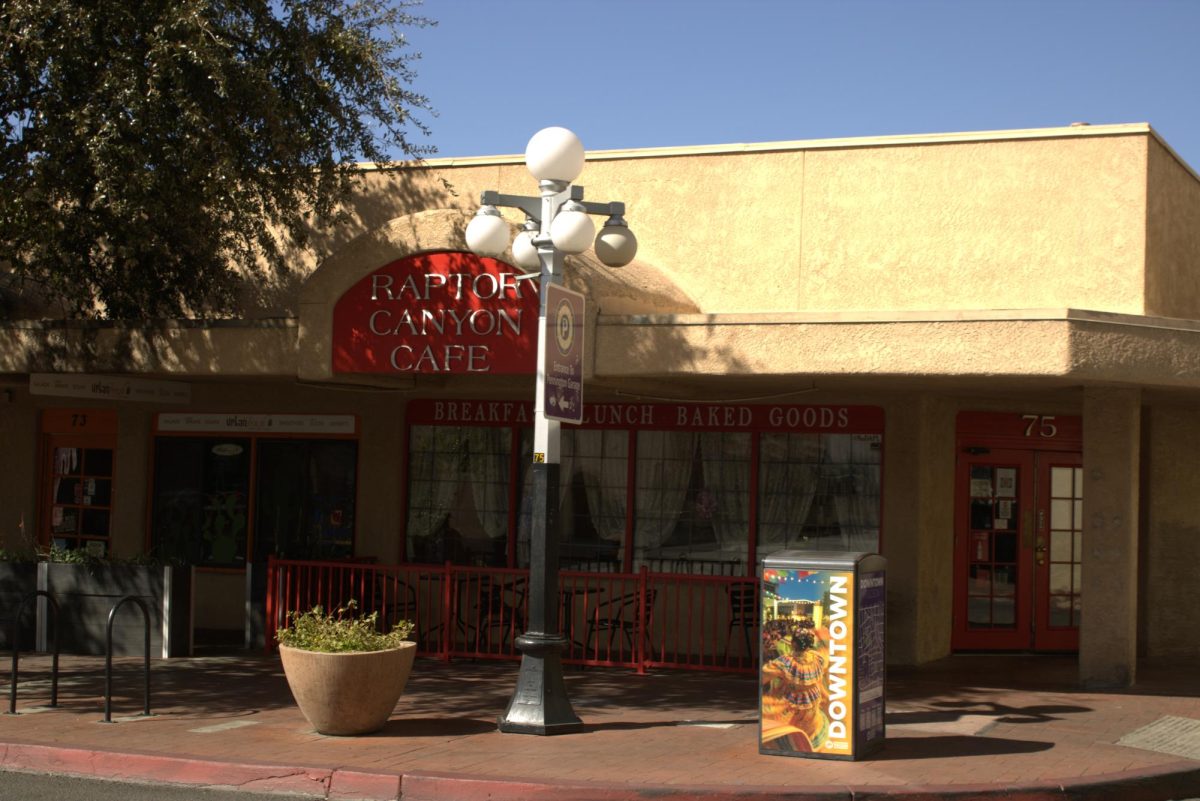TUCSON, Ariz.‒ Zemam’s Ethiopian cuisine, located on East Broadway Boulevard offers a wide variety of Ethiopian dishes and a comfortable dining experience. Its bright pink and red exterior makes it easy for first-time customers to spot. The restaurant stands out with a house-like appearance, ushering a friendly and welcoming atmosphere.
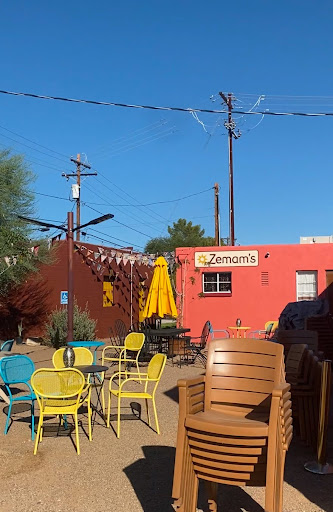
Bright sunny afternoon at Zemam’s Ethiopian Cuisine
Zemam’s vibrant colors make it easy to spot, but finding the entrance can be tricky for first-time customers. They must walk around the restaurant to the parking lot and follow a narrow path lined with outdoor seating areas to reach the entrance.
Directional signs from outside the building guide customers in.
Inside, guests are greeted by a server at the cashier’s desk. To the left is a room displaying traditional African handicrafts and decorations, as well as awards, news articles and posters. The items aren’t just for decorations but also represent Indigenous African cultures, authentically sourced from countries around the African continent.
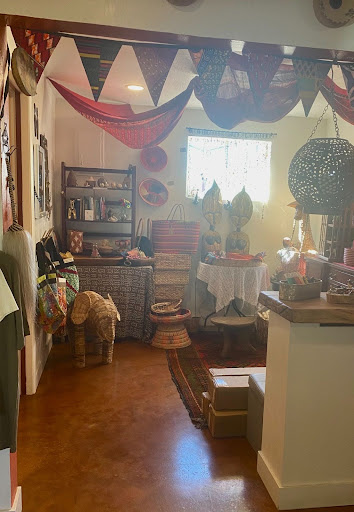
Room displaying African Artifacts
Zemam’s Ethiopian Cuisine started in 1993 as Tucson’s first Ethiopian restaurant. The owner, Amanuel Gebremariam, 72, immigrated to the United States as a refugee. He moved to Tucson to complete his graduate studies at the University of Arizona, selling hot dogs on campus while studying. His business grew from there.
The restaurant’s atmosphere reflects Gebremariam’s African roots.
“I tried to imitate the look of Africa,” he said, pointing to a painting of the Queen of Sheba and Solomon hanging behind our table, which he obtained from Ethiopia. “The statues by the wall are from Nigeria Ibadan. I want my children to understand their origin. They come from a proud origin. “
The walls of the restaurant are painted white, and the wooden floors add to the welcoming atmosphere. However, the low ceilings might be challenging for taller guests, especially those over 6’7″.
On a recent visit with my dad, I requested a table for two at the front desk and was led inside where dining tables and dining chairs fill the various rooms. The walls featured more drawings and artifact displays, adding to the cultural atmosphere. When we entered, we spotted a few families and friends eating, but for the most part, there were plenty of seats available.
A server delivered two menus and two glasses of water, then returned a few minutes later for our order. I glanced through the menu for more time to decide; but my dad immediately asked if rice was on the menu. It wasn’t. But the waiter talked us through the menu, explaining the items and his recommendations.
The owner was nearby and suggested the sampler, which features two vegetable dishes and one meat dish. We ended up trying foussulia (string beans and carrots simmered in a mild sauce), yemisir wat (red lentils in spicy berbere sauce), and minchet abish (minced beef in a mild blend of berbere, cardamom, and fenugreek)
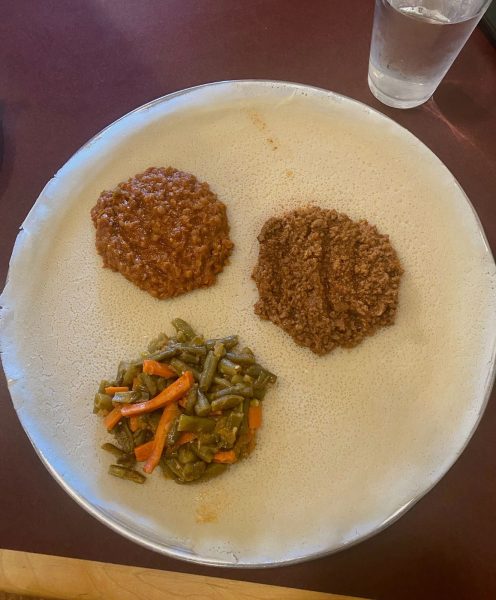
Mixed meat and veggie sampler plate featuring foussulia, yemisir wat and minchet abish
At Zemam’s, the staff plays an important role in making sure the customers have the best dining experience.
“It’s never really been a struggle, even on the busiest night, because the other servers are great, and we help one another,” said Jonah Ray, a server who has been working at Zemam’s for more than five years.
After about seven minutes, the waiter arrived with the food, served on a large, flat round plate lined with injera—a sour, fermented, tortilla-like flatbread. The texture of the injera reminded me of crepes, but it was spongy, tangy and sour. Extra injera was served on a smaller plate. Medium-sized portions of vegetables, meat and stews were neatly placed on top of the injera.
Eating the dish involves tearing off a piece of injera with your hand and scooping your choice of vegetable, stew or meat. The foussulia balanced a mixture of flavors, combining soft string beans and sweet carrots. The yemisir wat was savory and spicy, while the minchet abish was milder and spicy. The portion size was just right, and we finished everything on the plate except the injera. For a sampler plate with three sides, it was a reasonable price of $20.
I enjoyed the food presentation, as it reminded me of the traditional Ghanaian meals in my culture, where we eat with our hands and share from one large bowl. This style of eating, with all the dishes laid out on a large plate, brought a sense of nostalgia.
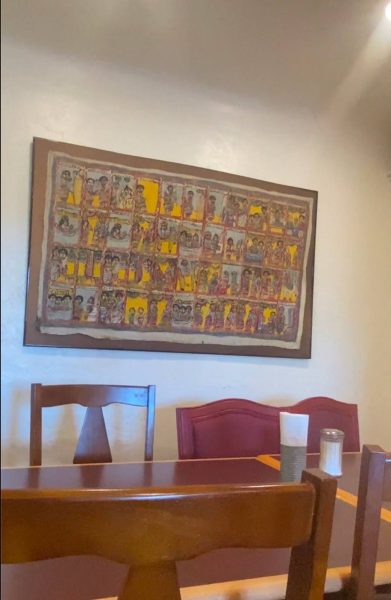
Queen of Sheba and Solomon painting
Dining at Zemam was a pleasant experience. The service offered creates a welcoming atmosphere. Restaurants like Zemam contribute to Tucson’s unique cultural landscape, highlighting its diversity. If you are seeking a dining experience rich in cultural representation in a comfortable setting, Zemam might be the place for you.
Arizona Sonoran News is a news Service of the University of Arizona School of Journalism.




